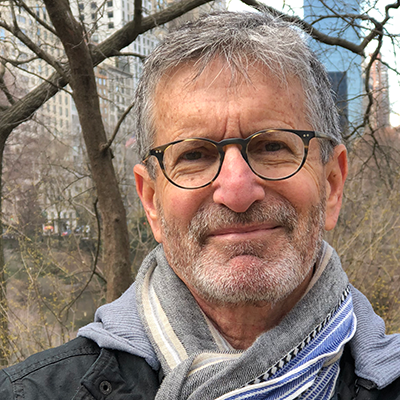There should be a warning: Oxygen breathing tanks may be necessary to compensate for the room’s depletion of air due to excessive chatter and uncontrollable laughter.
The excitement in the atmosphere was palpable. A couple dozen older adults waited patiently, seated in a large semi-circle in the common area of their senior living community. Soon they’d be greeted by a herd of elementary schoolchildren bursting into the room, excited for their monthly get together. Within minutes, the reunited pan-generational “buddies” would be enthusiastically trading stories about what has happened in each other’s lives since their last visit. Then, for the next few hours, it was all fun and games.
The buddies would read aloud. Draw pictures with crayons. Play music and sing. Work on holiday crafts.
In between the scheduled projects they would braid one another’s hair … compare Velcro on shoes … repurpose wheelchairs as climbing apparatus … and chat and laugh, constantly.
Having spent a decade working in the field of aging services as a public relations counselor, I experienced this inspiring, ageless phenomenon each time the generations connected. Friendships and memories were made, to surely last a lifetime. The kids’ energy seemed to recharge the lives of residents. The undivided attention the older adults gave to the kids was equally valued.
Children livened up the assisted living and skilled nursing environs and were always, always a welcome disruption to the too routine lives of the residents. This invariably left me wondering: Why is this rich, good-natured experience regulated? And more to the point, ironically, not facetiously: Why does age-segregated senior housing exist?
“For half a century, we’ve been sold the idea of later life as second youth – a time for leisure, often lived out in age-graded playgrounds,” wrote Marc Freedman, CEO and founder of Encore.org. In his provocatively titled essay, “An Intergenerational Revolution,” which first appeared in the Milken Center’s 2016 report, The Power of Purposeful Aging, he then doubled down: “The plain truth is we’ve gotten the generational issue exactly wrong. Older people shouldn’t self-segregate in age-restricted communities.”
NO KIDDING, WHAT’S THE DEAL WITH ‘SENIOR LIVING’?
Fortunately a movement is emerging: “age-friendly” (or “livable” or “age-advantaged”) communities with intergenerational living, services and supports. For now the model is a progressive designation, but judging by the appeal and inherent benefits should soon enough become an expectation. Generativity will be commonplace in purposefully designed enclaves where old and young people choose to live and support one another in many ways: where there’s access to standardized age-appropriate services and, most importantly, where the cultural, economic and health advantages of intergenerational connections are validated.
Intergenerational relations, programs and places provide priceless benefits to older adults, younger generations and society overall, according to nonprofit advocacy group Generations United, numerous research studies … and common sense.
Beyond the intuitive advantages of older and younger people connecting, there are evidence-based reasons as well:
For older adults, the benefits include: enhanced socialization; increased emotional support; opportunities to remain relevant and purposeful, and improved health. Remaining physically, cognitively and socially active confers health benefits by delaying or preventing the onset of disease and disability in older adults. And older adults are motivated to be more engaged: various studies report that 60 percent of older adults currently volunteer and say retirement is a time to be active and involved in the community, to start new activities and set new goals.
Younger generations, especially children, benefit by improved academic performance, enhanced social skills, decreased negative behavior and increased stability.
At the foundation of quality intergenerational relations is mutual respect. Literary historian Gilbert Highet observed, “Wherever there are beginners and experts, old and young, there is some kind of learning going on, some kind of teaching. We are all pupils and we are all teachers.”
Society as a whole benefits by sharing resources, skills, knowledge, finances and time. Everyone benefits as well by breaking down age-old prejudices – ageism — perpetuated by ignorance of one another’s beliefs and life experiences. Proximity also encourages constructive engagement: Older adults might need transportation, yard and housework, tech support; younger neighbors might need childcare, mentoring and handiwork; and people of all ages appreciate companionship and social connections.
The marketing of “senior living” of all kinds – assisted living, skilled nursing, affordable housing, etc. — highlight convenience, comfort, security and care. Yet these attributes are hardly unique or exclusive to such settings. They can and do exist in progressive age-advantaged communities — just beyond the isolating walls and “pack-aging” confines of separate-but-equal senior living.
With due respect to the 150-plus year history of senior homes and services, segregation of a portion of the population is unnatural, unhealthy and unsocial. In this more enlightened age, all generations would enjoy better lives united rather than divided.
Photo credit: Bernard Weil, Toronto Star, 2-9-16







I love the possibilities of multi-generational living.
Note: Next Wednesday octogenarians will be visiting my high school class to explain what the Great Depression was really like.
It certainly would be interesting to get a response to this commentary/observation from someone from Leading Age…Maybe something to be discussed at an upcoming conference or meeting….Thanks Stu for shedding light on something that is actually right under our noses but is not seen.